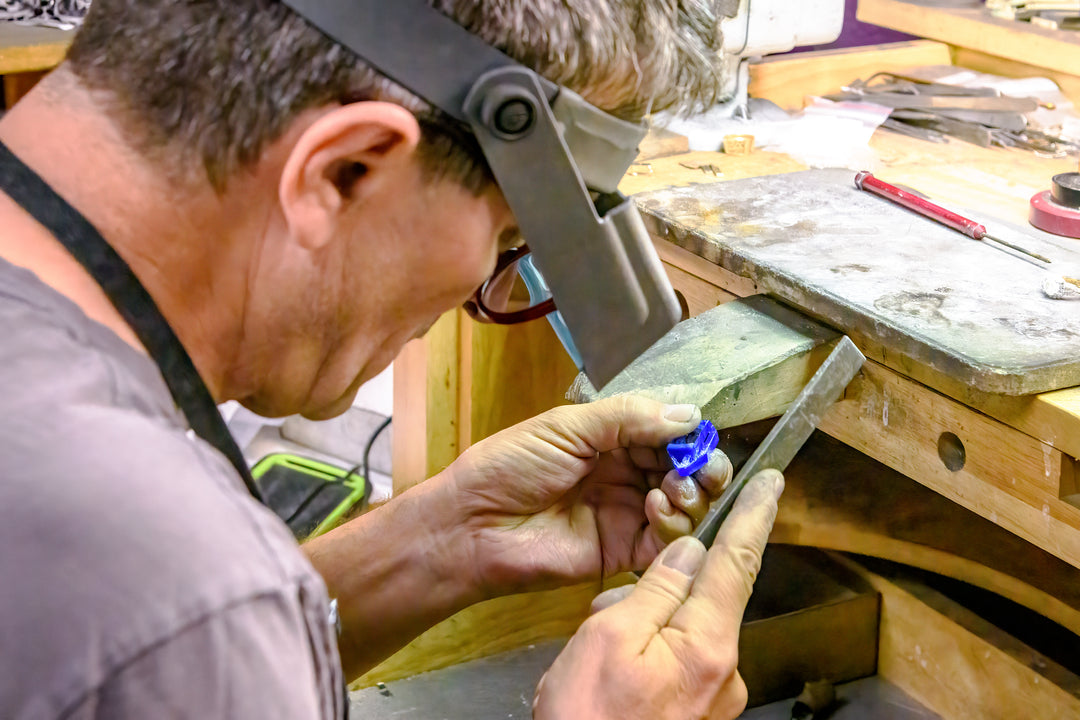June Birthstones: What to Choose?
June Birthstones: What to choose?
If you’re lucky enough to be born in June, you have two birthstones to enjoy! One is the classic and timeless pearl, while the other is the lesser-known and unique alexandrite. Both are rare beauties in their own right, but why would one month have two wildly different gems representing it? Why do particular gems get particular months? With our combined guide to both pearls and alexandrite, we’ll dive into these questions, and help decide which gem is right for you! (But really, why not have both?)
So, how did birthstones come to be a thing in the first place? Well, some experts believe the way birthstones were chosen for each month can be traced back to the Bible. Moses set directions for making special garments for Aaron, the High Priest of the Hebrews. The breastplate was said to contain 12 different gemstones, representing the twelve tribes of Israel. From here, each stone was linked to a sign of the zodiac, and eventually the calendar months. Through the generations, stones colors and types have shifted, and we were left with the traditional birthstones we know of today!

Why bother assigning gemstones to birth months? That’s a bit more murky. Back when curses and mysterious illnesses were a daily occurrence, people would be drawn to anything that might bring them fortune. Enter: a gemstone attuned to you, designed to bring you protection and health, or to dispel negative energies. Now, the superstitious element of birthstones has faded away, but there is still a certain allure to claiming a particular gemstone as special to you. Giving a birthstone today represents a way to show love and care.
So, why does June have multiple gemstones? Well, in 1912, the American National Jeweler’s Association put together an official list of gems for each month. Since 1912, there have been some changes and shifts, as new gemstones have been discovered! Originally, the official birthstone for June was the pearl, with the moonstone as an alternative stone. As alexandrite gained a reputation for its rarity and beauty, it was added to the list.
Choosing Pearl Jewelry
Pearls are just a 2.5 - 3 on the Mohs scale of hardness, so they need to be treated more carefully than most other gems. Store them separately from other gems or metal jewelry to avoid scratching them.
Pearls are valued based on several factors, just like gemstones and diamonds. It’s important to consider the shape of the pearls, the surface quality and luster, and the size. When it comes to the shape, a more round pearl is most valuable. Especially if you’re looking at a strand of pearls, a consistent shape will be more valuable. As pearls are formed inside an oyster, none are perfectly round, but it’s possible to come close. Another important factor is how the surface of the pearl itself looks. It’s not uncommon for pearls to have some small blemishes as a result of how they formed. Finding a pearl with minimal imperfections will add value.
Luster is another quality to look for in a pearl. If it has an almost mirror-like shine, it’s a high luster pearl, and very sought after. And of course, the size of the pearl is something to consider as well! All other factors being equal, larger pearls will be more rare, and harder to find.
Choosing Alexandrite Jewelry
Green in sunlight, red indoors, alexandrite is one of nature’s magic tricks. It ranks 8.5 on the Mohs hardness scale, so it requires much less careful attention when being worn or stored, it is durable enough for everyday wear. If you’re in love with the color-shifting beauty of alexandrite gems, finding a stone that has pronounced color change is at the top of the quality list! But, like all gemstones, the quality of an alexandrite is determined by other factors, as well.
Alexandrite is often imitated because of its rarity. It’s possible to infuse a man-made sapphire with similar elements to give it a color-shifting effect that’s similar to an alexandrite. If it seems too good to be true, it probably is. Alexandrite can also be grown in a lab, since finding natural stones is so rare. These gems exhibit the same effects as alexandrite that has been mined, but are man-made. If you’re shopping for an alexandrite, we’re happy to join you on the treasure hunt!
Whether the timeless look of pearl is calling your name, or the unique, unexpected beauty of alexandrite, we’re here to help!
Contact us to start a search for the perfect pearls, or an amazing alexandrite piece.




